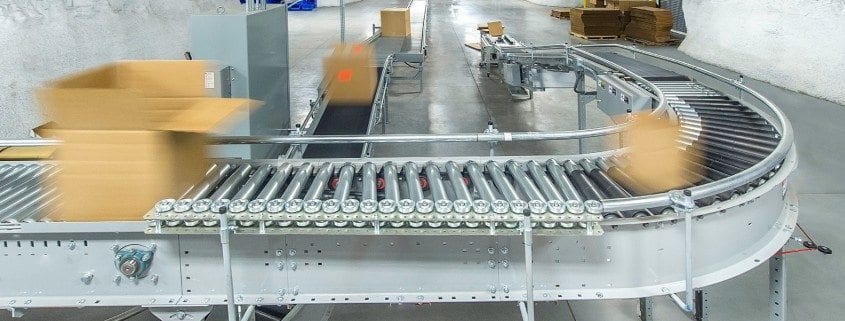Stacey Meadwell – National and supplements editor, Estates Gazette
E-commerce, technology, shortage of land, urban logistics, autonomous vehicles, staff shortages, power… these and many other factors are increasingly influencing distribution warehouse design. But what will warehouse space look like in the future?
Large warehouses have already seen the introduction of mezzanines and there are more outlandish proposals for airborne or underwater distribution units out there.
Jonathan Compton, head of industrial and logistics strategy at CBRE, says: “For warehouses in urban areas, design features will be more innovative and dramatic as the solutions to overcome the ever-more acute reduction in available industrial land.
“Every day we read about another patented idea to solve the supply chain challenges. We have seen proposals for underground warehouses, multi-storey buildings, underwater solutions and airships that could hover at 45,000ft releasing drones for fast delivery.
“Ultimately, it will boil down to familiar issues such as overcoming congestion, reducing pollution and sourcing suitable land close to the chimney pots.”
Going underground
Just 10 minutes outside Kansas is the world’s largest underground business complex. The SubTropolis is an industrial park housed in an excavated mine the size of 140 football fields.
The mining of 270m-year-old limestone deposits has created a dry, brightly lit facility, with miles of wide, paved streets accessible at street level. The removal of limestone over many years by the room and pillar method has created a space which could be purposebuilt for industrial.
The upshot is 6m sq ft of lettable space with more than 8m sq ft available for expansion. There are 8.2 miles of lighted, wide, paved roads, 2.1 miles of railway track and more than 500 truck dock locations.
The complex is home to more than 55 local, national and international businesses – from auto parts suppliers to data centres – with 1,700 employees.
And whether the requirement is for 10,000 or 1m sq ft, a tenant can be in their space within 150 days.
Such an idea could be coming to the UK soon, albeit on a much smaller scale. In the summer, Hounslow Council granted developer Formal Investments planning permission for a 2m sq ft underground warehouse on a site alongside The Parkway (A312) and Bath Road (A4) near Heathrow Airport.
The space above ground will be used as a park. The warehouse will sit beneath it in a style similar to the car park beneath Hyde Park, SW1. The development will be built in phases using the sealed top-down construction method, which was used to build the Shard, SE1.
It will take between seven and 10 years to complete the project.
The sky’s the limit
John Harcourt, head of property at Kajima, the UK arm of global property developer and investor Kajima Corporation, says that for urban areas and where demand for last-mile deliveries is high, a more innovative solution to warehouse design is required.
“The logical long-term solution is to build up like our Victorian forebears. While there are inevitably questions from investors and occupiers as to the practicalities of ulti-storey warehouses, most issues are simply a question of engineering. And it is infinitely more practical a solution to the last-mile problem than alternatives such as drone deliveries buzzing around an already busy London airspace.
“In the UK the conversation is around two-, three- or even four-storey buildings, but Kajima has developed multi-storey warehouses in Japan – particularly in Tokyo – for a number of years now; the tallest of which is seven storeys high. The sky really is the limit.”
Powerhouses
The need for more power and the need to reduce the cost of that power will increasingly influence the design of industrial and distribution facilities.
Jonathan Compton, head of industrial and logistics strategy at CBRE, says: “We expect to see a greater emphasis on the reliance of available power at the regional distribution centres, particularly if autonomous and electrified HGVs become mainstream over the next decade.”
Ian Worboys, chief executive of pan-European logistics investor-developer P3, agrees: “I can see a time when warehouses will need to be their own powerhouses.
“While the availability of labour is one of the key drivers in logistics location decisions at present, as the level of automation and technology in warehouses increases, the availability of power is likely to become an increasing concern.
“The solution might be for logistics facilities to be built with photovoltaics on the roof, powering Tesla batteries that in turn charge driverless forklifts and delivery vehicles.”
In fact, IM Properties has made a move in that direction. It built a 69,000 sq ft warehouse in Birmingham with PV roof panels. The building, which Argos has leased and will move into at the end of the year, is electricity cost-neutral and could be the first of many.
A spokesman for IM Properties says once the site is operational it will collect the data, so it has evidence of the real-time benefits to take to the market.


